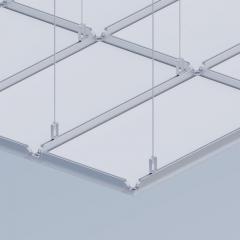
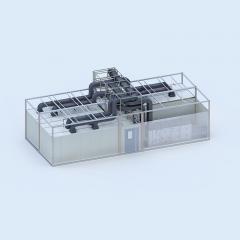
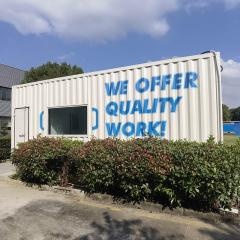
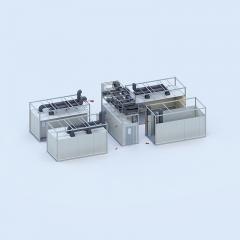
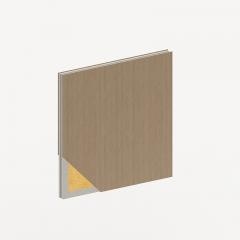
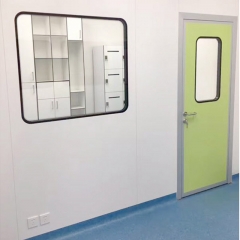
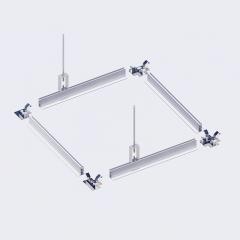
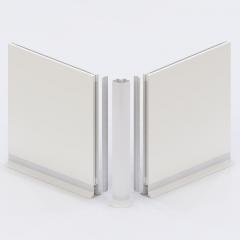
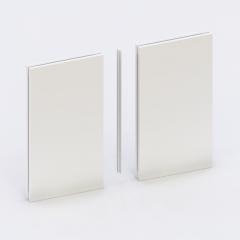
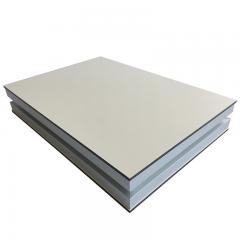
Now in many industrial occasions, air purification filter is one of the indispensable facilities, especially in the environment with high hygiene requirements such as hospitals. The application of air purification technology in medicine, in particular, creates a highly clean space for surgical operations, reduces the infection rate of the operation, and increases the success rate. The following editor will take everyone to understand the air purification technology. Air purification technology, as the name implies, air cleanliness refers to the degree of cleanliness in the air. Air purification technology refers to the use of physical methods to effectively remove polluting particles and other pollution in the air, so that the air within the space can maintain a certain level Cleanliness. The value of cleanliness is usually measured by the concentration of dust. If the concentration of dust is high, the cleanliness is low. Among them, the cleanliness in the clean operating room cannot be lower than 100,000; Air purification technology is usually classified into turbulent flow, horizontal laminar flow, and vertical laminar flow. At present, the most widely used operating room is the vertical laminar flow. The following is an introduction to what kind of operations different levels of clean operating rooms are suitable for: Class I special clean operating room can usually be used for joint replacement surgery, organ transplant surgery, brain surgery, surgery, ophthalmology and other operations; Class II standard clean operating room can be used in thoracic surgery, surgery, urology, orthopedics and other operations; Class III general clean surgery is generally used in general surgery, obstetrics and gynecology and other operations; The Ⅳ-grade standard clean operating room is suitable for anorectal surgery and other operations. Professional in the clean room industry for decades, welcome to inquire about clean room ceiling system, clean room doors and windows, clean room equipment, etc.
Clean room refers to the removal of particles, harmful air, bacteria and other pollutants in the air within a certain space, and the control of indoor temperature, cleanliness, indoor pressure, air velocity and air distribution, noise, vibration, lighting, and static electricity In a certain range of needs, and given a specially designed room. That is to say, no matter how the external air conditions change, the room can maintain the original set requirements of cleanliness, temperature, humidity, and pressure. The main function of the clean room is to control the cleanliness, temperature and humidity of the atmosphere that the products (such as silicon chips, etc.) contact, so that the products can be produced and manufactured in a good environmental space. This space is called a clean room. One. Indicators of clean room. 1. The air supply in the clean room is sufficient to dilute or eliminate the pollution generated in the room. 2. The air in the clean room flows from the clean area to the area with poor cleanliness. The flow of contaminated air reaches the lowest level, and the air flows in the correct direction at the door and in the indoor building. 3. The air supply in the clean room will not significantly increase indoor pollution. 4. The movement state of the indoor air can ensure that there is no high concentration gathering area in the secret room. Two.Clean room testing. 1. Air supply and exhaust air volume: If it is a turbulent clean room, the air supply and exhaust air volume must be measured. If it is a one-way flow clean room, the wind speed must be measured. 2. Airflow control between each zone: In order to prove that the airflow movement direction between each zone is correct, that is, it flows from the clean area to the area with poor cleanliness, it is necessary to check: (1) The pressure difference in each section is correct; (2) The direction of air movement at the doorway or openings on the wall, floor, etc. is correct, that is, it flows from the clean area to the area with poor cleanliness. 3. Filter leak detection: The high-efficiency filter and its frame should be inspected to ensure that suspended pollutants will not pass through: (1) Damaged filter; (2) The gap between the filter and its outer frame; (3) Other parts of the filter device invade the room. 4. Isolation leak detection: This test is to prove that suspended pollutants do not penetrate the building materials into the clean room. 5. Indoor airflow control: The type of airflow control test depends on the airflow mode of the clean room-turbulent flow or unidirectional flow. If the air flow in the clean room is turbulent, it must be verified that there is no area with insufficient air flow in the room. If it is a one-way flow clean room, it must be verified that the wind speed and direction of the entire room meet the design requirements. 6. Suspended particle concentration and microbial concentration: If the above tests meet the requirements, the particle concent...
Clean technology, also known as production environment and pollution control technology, is a comprehensive emerging science and technology developed with high technology in recent years. Clean technology usually includes: air purification technology, air conditioning technology, water purification technology, gas purification technology, micro-magazine control technology, clean environment detection technology and related environmental control technology. Purification engineering technology is widely used in high-tech industrial fields such as electronics, nuclear, aerospace, bioengineering, pharmaceuticals, precision machinery, chemicals, food, automobile manufacturing, and modern science. With the improvement of people’s living standards in our country, people have put forward higher and higher requirements for the living environment and quality of life. High-purity water prepared by water purification equipment has been generally welcomed by people. Purification engineering technology has begun to enter thousands of households and enter people’s modern life. . Compared with advanced foreign countries, my country's clean technology and equipment are obviously far behind. The HEPA filter that my country only began to produce in 1965 is fifteen years older than foreign countries. The light scattering dust particle counter that started production in 1975 was twenty years later than abroad. 0.1 micron clean technology and equipment have become mature technologies in advanced countries in the world, while my country has just started. In terms of the scale and technical level of clean room construction, the gap between my country and advanced countries is even greater. Japan’s Shimizu Construction Company. The clean room area under contract from 1982 to 1987 reached 718 thousand square meters, while the total area of clean room under contract in my country is less than 100,000 square meters. Great development. The total area of clean rooms under contract in 1993 was close to 150,000 square meters. The scale of clean room construction in the United States is even larger. In 1998, statistics reached 1.885 million square meters. In terms of the level of clean engineering technology, in the late 1980s, a large number of ultra-clean rooms of 0.1 micron level had been built abroad. In 1987, Sanyo Niigata Factory in Japan built a tenth level clean workshop of 3000 square meters, and NIT logs built four 1000 square meters. Meters control 0.1 micron dust in a thousand-level workshop, and the number of air changes is as high as 300 times per minute. The new US TSMCS plant in Taiwan has built a fourth-generation ducted clean room with a total area of 10,000 square meters. The 0, 1 micron grade 10 clean room used in my country mainly depends on imports from abroad. Because the cost of a clean room with a high level of cleanliness is very expensive, the cost per square meter of a 0.1 micron class 10 clean room is as high as 10,000 US dollars. Clean workshops occ...
China's clean technology started in the early 1960s. In 1964, a sodium flame test bench for high efficiency filters was built. In 1965, the Air Conditioning Research Institute of the Chinese Academy of Building Research developed GS series high efficiency air filters with blue asbestos fiber filter paper (for later use) and GB series high efficiency air filters with ultra-fine glass fiber filter paper. In 1973, China’s first dust particle counter model J-73 (measuring range 0.3~10μm) and monodisperse polystyrene latex standard particles (PSL) for calibration of particle counters were successfully developed. ED-STD-209A standard 100,000 to 100 clean workshop design and construction. From the late 1970s to the late 1980s, it was the stage of maturity and development of China's clean technology. In 1979, the Air Conditioning Institute of CABR organized the compilation and publication of "Technical Measures for Air Cleaning", which was China's first normative document on clean technology. n June 1982, the Clean Technology Branch of the Chinese Institute of Electronics (CCCS) was established, and the professional magazine "Clean and Air Conditioning Technology" was published, which played a significant role in promoting the progress of clean room technology and international exchanges. In 1984, the national standard GBJ73-84 "Code for Design of Clean Workshops" was issued, and now the latest version is GB 50073-2013 "Code for Design of Clean Workshops". Later, according to the needs of the industry, various clean technical specifications and standards of electronics, medical and health, food, and microbiological safety have been published. After the 1990s, China's clean technology has gradually integrated with the international standards. From the theoretical research of clean technology to the research and production of clean products, and the detection and control of clean environment, my country has gradually reached the level of developed countries in the world. In recent years, most areas of our country have been more and more severely affected by smog. The concept of home purification has begun to spread. Cleanliness has gradually penetrated into everyone’s thoughts and lives. Related new technologies and products continue to emerge, which will become a new industry in the clean industry Opportunities and development points. Welcome to inquiry sliding doors for clean room、clean room profiles、hpl partition wall and clean room partition panels etc.
Nowadays, clean rooms have been widely used in various industries such as electronics, biopharmaceuticals, and precision instrument manufacturing. Due to the huge advantages of clean rooms in terms of temperature, relative humidity and cleanliness, its importance has been increasingly recognized by people. Recognize and accept. How to prevent the occurrence of fire accidents in the clean room, let's talk about how to do a good job in the fire protection design of the clean room. One, the basic characteristics of the clean room The clean room refers to the workshop that has special purification requirements for the building in the production process. Its basic characteristics are: 1. Mostly it is reinforced concrete structure, and the factory building is divided into several small rooms; 2. It is often in a closed state with few windows and doors; 3. The equipment in the factory is expensive, afraid of high temperature and avoiding water; 4. Inside the factory The staff is small, which is not conducive to the detection of the fire and the treatment of the initial fire; 5. The internal structure is complicated and the passage is tortuous. Second, the fire characteristics of the clean room 1. The flue gas heat accumulates and spreads in many ways. The clean room is generally airtight, with few airtight clean room doors and windows. When a fire occurs, the heat of the flue gas is not easy to escape, resulting in the retention of flue gas and a sharp increase in heat. In addition, the ventilation pipes, electrical wiring bushings, and technical interlayers in the factory are in collusion with each other. It is easy to cause the smoke and hot air flow to spread quickly to other rooms. 2. It is difficult for personnel to escape. Due to technological requirements, the clean room has complicated internal partitions, narrow passageways, few safety exits, and long depth distances. It is easy to lose direction after a fire occurs. In addition to the small number of staff, the initial fire disaster is discovered in time, and it is difficult to get out of the fire when it strikes. . 3. The smoke is very toxic. Some high-molecular synthetic materials are used in interior decoration. These materials will generate a lot of dense smoke and toxic gas when they burn, which poses a great threat to personnel escape and firefighting. 4. The loss is large. There are often a lot of extremely sophisticated and expensive equipment in the clean room, and the construction investment is large. Once a fire occurs, the economic loss will be huge. Third, the basic principles to be grasped in the fire protection design of clean room buildings According to the characteristics of the clean room and its fire characteristics, in order to ensure the safety of people's lives and property, minimize the loss of fire, and facilitate the evacuation and rescue of personnel, we should follow the following principles in the fire protection design of buildings. 1. Fire resistance rating and fi...
Many factories now use dust-free workshops. There are many problems that need attention in the design and implementation of dust-free workshops. If you are not careful, it will cause adverse effects and cause irreversible consequences. Then, some precautions about the clean room are as follows: 1. Pay attention to energy-saving work in air-conditioning purification. The air conditioner itself consumes a lot of energy and consumes a lot of energy. During the installation and implementation process, attention should be paid to the division of the system area, the calculation of the air supply, the determination of the temperature and the relative temperature, the determination of the cleanliness level and the number of air changes, and the fresh air ratio. Air duct insulation, the influence of the biting form in the duct production on the air leakage rate, the influence of the connection angle of the main pipe and branch pipe on the airflow resistance, whether the flange connection is leaking, and the selection of equipment such as air-conditioning box, fan, chiller, etc. Regarding energy consumption, these related factors must be taken into consideration, repeated trials and testing, and accurate records. 2. The air duct requires economy and efficiency. In centralized or purified air-conditioning systems, the requirements for air ducts are economical and effective air delivery. The former requirements are embodied in cheap prices, convenient construction of dust-free workshops, operating costs, and low resistance to smooth inner surfaces. The latter is Refers to good tightness, no air leakage, no dust generation, no dust accumulation, no pollution, fire resistance, corrosion resistance, moisture resistance, etc. During operation, sometimes the local resistance of the pipe fittings is much higher than the resistance along the air duct. This situation needs to be improved. The pipe fittings mainly include elbows, reducer tees and cross pipes. The central curvature radius of the elbow should be The side length of the rectangular duct is larger than that of the rectangular duct. The diameter of the circular duct is 1.25 times. For large section ducts, a deflector should be added to the duct to reduce resistance. In actual installation and construction, this treatment is rarely done. If the diameter is changed suddenly, it is advisable to make a gradual expansion (contraction) pipe. The expansion angle of each side of the expansion pipe should be greater than 15 degrees, and the contraction angle of each side of the reducer pipe should not be greater than 30 degrees. The three-way of the rectangular duct should be bent along the airflow. For diversion, the branch pipe should also have a certain radius of curvature. For diversion at a 90-degree angle, a deflector should be added to the elbow. 3. The air-conditioning box should be selected according to the local climatic conditions. Regarding the selection of the air-conditioning box, the climatic enviro...
 online service
online service +8613671979988
+8613671979988 info@wonclean.com
info@wonclean.com +8613671979988
+8613671979988